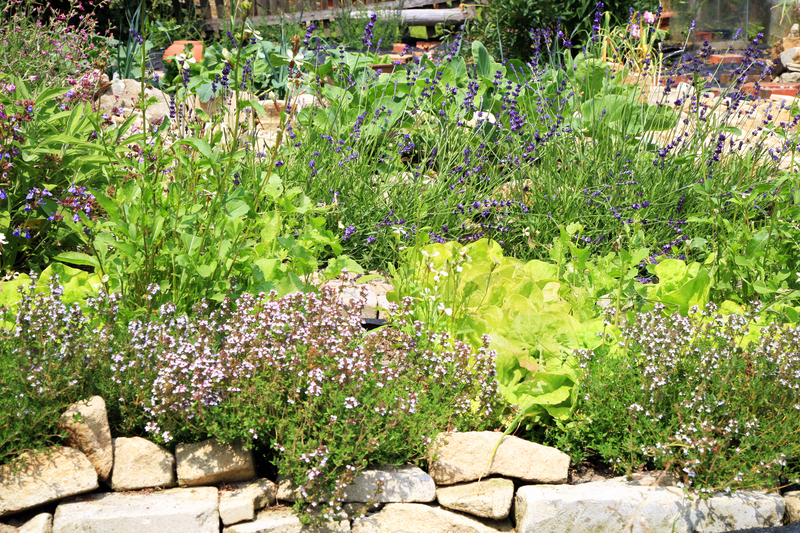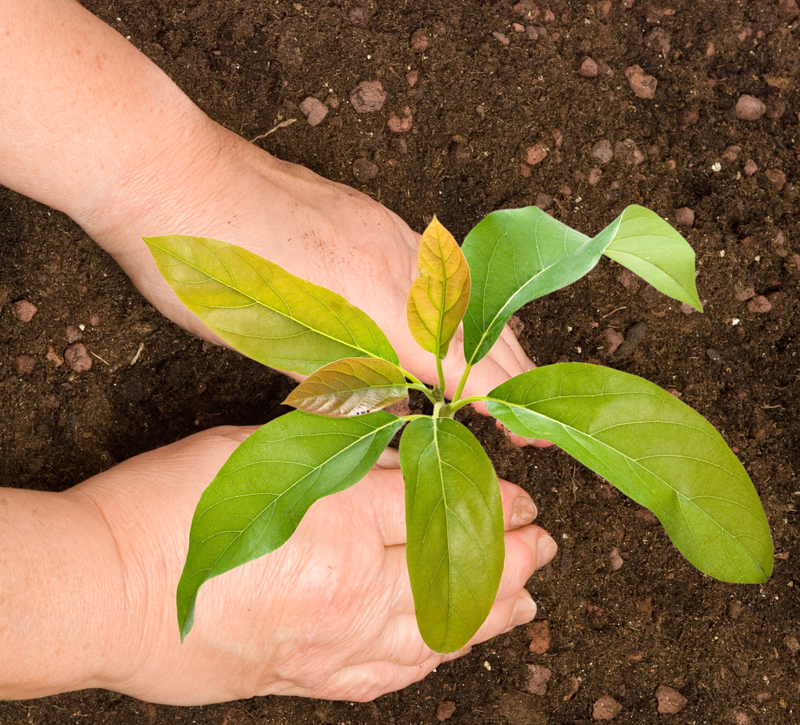Transformative Power of Gardening in the Climate Fight
Posted on 21/08/2025
Transformative Power of Gardening in the Climate Fight
Gardening is evolving from a leisure activity to a potent force in the fight against climate change. Around the world, communities, governments, and individuals are rediscovering the power of gardening as a practical, scalable, and accessible solution for climate resilience and environmental stewardship. This article explores the transformative impact of gardening on the climate crisis, delving into its science-backed benefits, practical strategies, and real-world examples that inspire collective action.

Why Gardening Matters in the Climate Fight
Climate change is not just a distant threat--it's a present-day reality that demands urgent and innovative solutions. While global policies and technological advancements play their roles, it is often local, grassroots initiatives that create lasting change. Gardening for climate action is one such initiative, offering a platform for individuals and communities to contribute directly to environmental health.
- Gardening reduces carbon footprints.
- Improves local biodiversity.
- Enhances soil health and water retention.
- Strengthens community and resilience.
- Educates and inspires climate-conscious behavior.
Understanding the Climate Impact of Gardening
At its core, the climate impact of gardening is grounded in nature's cycles. Plants photosynthesize, absorbing carbon dioxide--a major greenhouse gas--and converting it into oxygen. Healthy soils, vibrant plant life, and sustainable gardening practices create a virtuous cycle that can sequester carbon, reduce pollution, and mitigate the effects of climate change at the local level.
How Gardens Help Sequester Carbon
Soil is the world's second-largest carbon sink after the ocean. When we plant gardens, particularly with perennial plants, native species, and trees, we encourage long-term carbon storage. Photosynthetic plants draw CO2 from the atmosphere, storing it in their roots and the surrounding soil.
Choosing Plants That Maximize Carbon Capture
- Native trees and shrubs: These typically require less water and fertilizer, and their deep roots store carbon in the ground for years.
- Perennial plants: Unlike annuals, perennials return yearly, reducing soil disturbance and supporting stable carbon storage.
- Dense ground cover: Plants such as clover or creeping thyme create living mats that protect soil, prevent erosion, and keep carbon locked underground.
The Role of Soil Health in Carbon Sequestration
*Healthy, living soil is the engine of climate-smart gardening.* Practices such as composting, mulching, and no-till methods boost organic matter and microorganisms, further enhancing the garden's ability to trap and store carbon.
By avoiding synthetic chemicals and heavy tilling, gardeners can keep soils alive and working as allies in the climate fight.
Garden Design for Climate Resilience
Climate change brings unpredictable weather, with extremes of drought, floods, and heat. A well-designed garden can act as a local buffer against these risks while reinforcing ecological balance.
Key Strategies for Climate-Resilient Gardens
- Drought-tolerant landscaping: Use of xeriscaping and native species reduces water usage.
- Rain gardens and swales: Engineered dips and plantings absorb stormwater, reducing runoff and flooding risk.
- Windbreaks and shade trees: Trees strategically placed can protect homes from heat and storms while providing wildlife habitat.
- Pollinator-friendly plantings: Attracting bees, butterflies, and other insects supports global food systems under threat.
Reducing Urban Heat Islands Through Gardening
Urban areas often experience higher temperatures than surrounding regions--known as the "urban heat island effect." Rooftop and community gardening projects counter this phenomenon by shading surfaces, cooling the air through transpiration, and improving the reflective properties of otherwise heat-absorbing built environments.
- Green roofs: Rooftop gardens act as insulation, reducing energy demands and cooling air.
- Vertical gardens: Living walls provide both beauty and a cooling effect for city dwellers.
- Pocket parks: Small, plant-rich spaces interspersed throughout urban neighborhoods offer cool refuges and improve mental well-being.
Gardening for Biodiversity as Climate Insurance
Biodiversity is a natural insurance policy against climate shocks. Diverse gardens attract a variety of pollinators, support birds and beneficial insects, and create genetic reservoirs that can adapt to rapid environmental changes. By gardening with climate adaptation in mind, we boost the resilience of local ecosystems and, in turn, the world's food supply and natural habitats.
Promoting Biodiversity in the Home Garden
- Plant a variety of species: Mix flowering plants, vegetables, herbs, and trees.
- Provide water sources: Birds, pollinators, and amphibians all need water to thrive, especially in hotter climates.
- Avoid pesticides: Embrace natural pest control by encouraging predators like ladybugs and birds.
- Leave some wild space: Allowing areas of your garden to grow freely invites native wildlife and supports natural cycles.
Reducing Food Miles Through Edible Gardening
The global food system is a significant contributor to greenhouse gas emissions due to transportation, refrigeration, and packaging. *By growing your own fruits, vegetables, and herbs, you dramatically cut food miles and carbon footprint while reaping the rewards of fresh, organic produce.*
- Container gardening: Even a few pots on a balcony can yield herbs or salad greens.
- Community gardens: Shared plots foster cooperation, reciprocal learning, and resource pooling.
- Permaculture: Designing gardens with food forests and perennial crops mimics natural ecosystems and ensures long-term productivity.
Gardening and Food Waste Reduction
Growing your own food can also help reduce household food waste. Gardeners often harvest only what they need, and any excess trimmings or spoiled produce can be composted--a closed-loop system that replenishes the soil and cuts methane emissions from landfills.
Community Gardens: Building Social Resilience
The fight against climate change is also about rebuilding social ties, local economies, and community self-reliance. Community gardens provide green sanctuaries where people learn, share resources, and innovate together.
- Educational opportunities: Schools and neighborhood groups use gardens as outdoor classrooms for climate science, healthy eating, and environmental stewardship.
- Food security: Urban areas vulnerable to supply disruptions gain nutrition and resilience from local food systems.
- Inclusivity: Gardens welcome all ages and backgrounds, fostering mutual respect and shared purpose.
Gardening Innovations in the Climate Movement
As awareness of the climate benefits of gardening spreads, so too do new technologies and strategies to maximize their effects. Smart irrigation systems reduce water waste, while app-driven garden planning helps match plantings to microclimate conditions. Urban agriculture projects use hydroponics and aquaponics for year-round food production with minimal resources.
- Rainwater harvesting systems: Divert runoff to garden beds, saving water and reducing urban flooding.
- Composting and biochar: Enrich soils while sequestering carbon more stably than traditional mulch.
- Seed libraries: Preserve genetic diversity and bolster climate-adapted crop varieties.
The Human Health Connection
Climate-resilient gardening is not just good for the planet--it's good for people, too. Studies have shown that exposure to green spaces reduces stress, promotes physical activity, and lowers rates of depression. By engaging in climate-friendly gardening, individuals improve both their personal health and the ecological health of their surroundings.
Mental and Physical Benefits of Gardening for Climate Action
- Exercise: Planting, digging, and harvesting are productive forms of physical activity.
- Mental restoration: Green environments lower stress and improve mood.
- Purpose-driven work: Taking positive steps contributes to hope and resilience in the face of global challenges.

Becoming a Climate-Smart Gardener: Action Steps
Every garden, no matter the size, can contribute to climate well-being. Here are practical ways to transform your green space into a climate solution:
- Use organic and regenerative methods: Prioritize compost, cover crops, and minimal soil disturbance.
- Select native and climate-adapted plants: These thrive naturally and require fewer resources.
- Conserve water: Install drip irrigation, mulch beds, and capture rainwater.
- Promote biodiversity and wildlife habitat: Include pollinator-friendly flowers and birdhouses.
- Reduce lawn areas: Convert to edible beds or wildflower meadows where possible.
- Learn and engage: Join local climate gardening groups and take part in community initiatives.
Conclusion: The Global Power of Gardening in Climate Solutions
The transformative power of gardening in the climate fight lies not only in its environmental benefits but in its profound ability to reconnect us to the natural world and to each other. By cultivating gardens with climate action in mind, we cultivate hope, resilience, and a legacy of stewardship for generations to come.
Whether an urban rooftop retreat, a backyard plot, or a shared community space, every garden can serve as a climate action hub. As more people embrace gardening for climate solutions, these efforts ripple outward, turning local change into global impact.
*Let's harness the full potential of our gardens. Together, we can grow the future we wish to see--a greener, cooler, and more resilient planet for all.*

